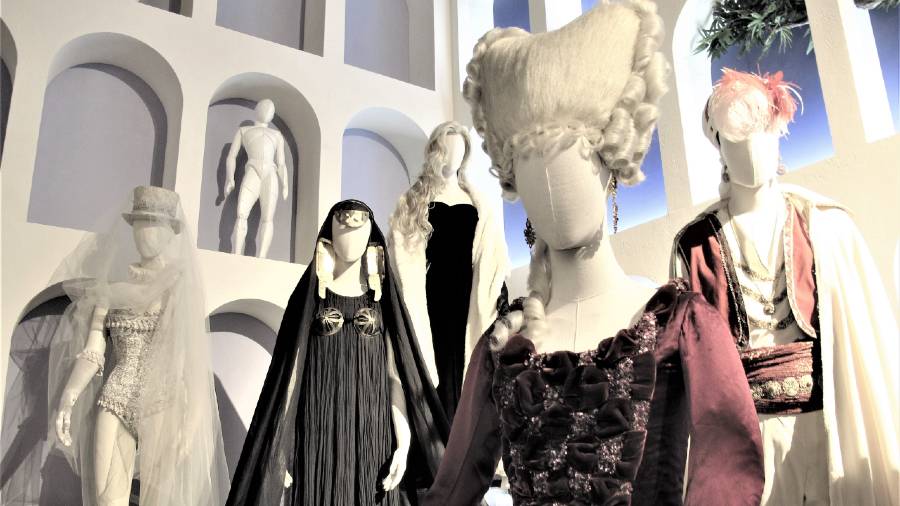As the centenary year of Federico Fellini, the Italian film-maker, draws to a grim and surreal close, the experience of sitting down to watch his great films again – La Dolce Vita, 8½, La Strada, Juliet of the Spirits, Roma – makes me think afresh about how fashion is inextricable in our lives not only from cinema, in particular, but also, in general, from feelings, fantasy and the way of all flesh. The human landscapes in these films – flamboyantly dreamlike, yet vitally real – compel us to relate what we wear and wish for, what makes us laugh and cry, what we conceal, reveal and project of ourselves, to the larger, deeper and more enduring questions of how we live, love, possess, abandon, disappear and die.
With their vision of what must perish as well as what is indomitable in us, Fellini’s films present us with the spectacle, the mystery, and the meaninglessness, of how we feast, drink, seduce, sing and dance through the night, yet end up alone, lost, bored or bereft the morning after, in a little black dress or in black tie, but with our heart in pieces, our soul in tatters, while the roar of the sea drowns the strains of what may have been a rumba in our ears. We find ourselves staring into the eye of a monstrous fish just hauled out of the water, while an angelic girl beckons from across the sand-flats although her words fail to make themselves heard.

The biggest hit from the most popular Italian filmmaker Federico Fellini Poster courtesy, www.amazon.in
That is how La Dolce Vita ends. It won not only the Golden Palm at Cannes in 1960, but also an Academy Award for ‘Best Costume Design: Black and White’. The same award was won again by 8½ (1962), which also got an Academy Award for Best Foreign Language Film. Fellini’s costume designer, Piero Gherardi, was also the production designer for most of his films. Gherardi was trained as an architect before he began to design the clothes and sets at the Cinecittà studios for Fellini. The only time the director chose to design his heroine’s clothes himself was when he cast his own wife, Giulietta Masina, in the title-role in Juliet of the Spirits (1965). Fellini’s investment in this coming together of architecture, production design and costume design speaks of how integral clothes had been to the peculiar universe of his films. The function and value of fashion and of style in his films – as in those of Antonioni, or, say, in Resnais’ Last Year at Marienbad (1961), in which most of the lead actress’s clothes were made, uncredited, by Coco Chanel – were more than merely cosmetic. They were essential to the range and depth of the film-maker’s understanding of what it means to be human. Italo Calvino, a writer and contemporary, called this “the indulgent complicity of the flesh”. “That is why Fellini manages to disturb us to the core,” Calvino wrote in ‘A Cinema-Goer’s Autobiography’, “because he forces us to admit that what we would most like to distance ourselves from is what is intrinsically close to us.”
No wonder, then, that Fellini was most spectacularly Catholic when his art was at its most blasphemous. At the heart of Roma (1971) is a sequence with a candle-lit catwalk, on which a cardinal in sunglasses is presented the state-of-the-art in ecclesiastical fashions: priests on roller skates, bishops in psychedelic chasubles, the Little Sisters of the Purgatory’s Temptation, a macabre Saint Theresa, and a resurrected Pope on a gold-and-white throne surrounded by ostrich feathers. They are all dressed by Danilo Donati and the house of Tirelli, and sashay to the elegiac drollery of Nino Rota’s music, rousing the cardinal and his guests from the Vatican to ecstasies of devotion. Here, fashion becomes a vehicle, at once baroque and avant-garde, of celebration as well as satire, just as the up-swept sunglasses of the ultra-chic Maddalena in La Dolce Vita hide an enigmatic black-eye, and the voluptuousness of Anita Ekberg’s person and couture must find its ultimate deification in the stagnant waters of a Roman fountain.











